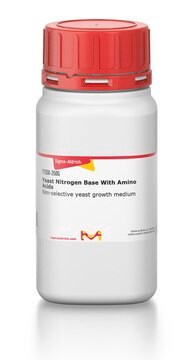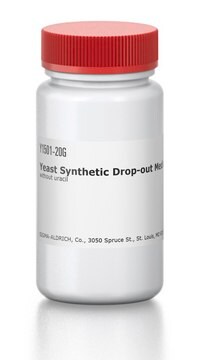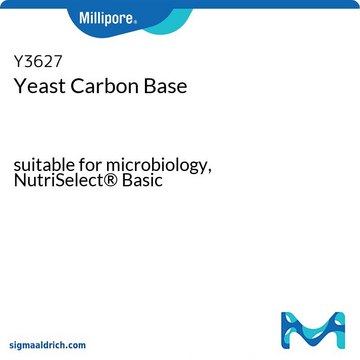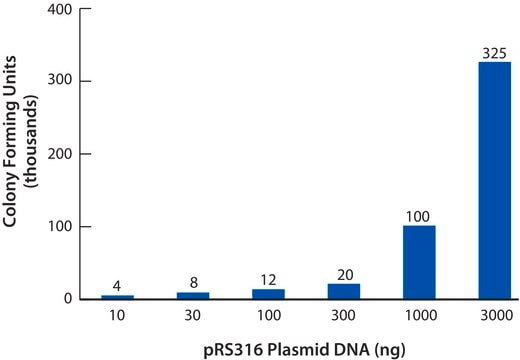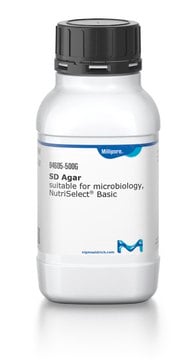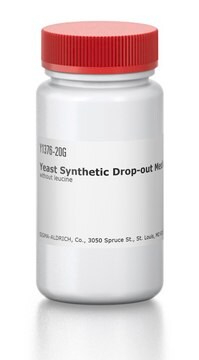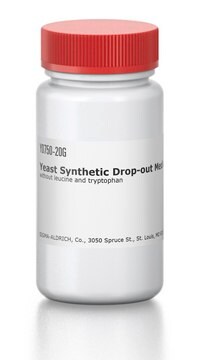Y1251
Yeast Nitrogen Base Without Amino Acids and Ammonium Sulfate
suitable for microbiology, NutriSelect® Basic
About This Item
Productos recomendados
sterility
non-sterile
form
powder
packaging
poly bottle of 1 kg
poly bottle of 500 g
manufacturer/tradename
NutriSelect® Basic
solubility
water: soluble 67 mg/mL
application(s)
clinical testing
food and beverages
life science and biopharma
microbiology
suitability
Candida spp.
Pichia spp.
Saccharomyces spp.
Zygosaccharomyces spp.
molds
yeasts
General description
Application
Components
Biotin, 2 μg/L
Calcium pantothenate, 400 μg/L
Folic acid, 2 μg/L
Niacin, 400 μg/L
p-Aminobenzoic acid, 200 μg/L
Pyridoxine HCl, 400 μg/L
Riboflavin, 200 μg/L
Thiamine HCl, 400 μg/L
Inositol, 2 mg/L
Boric acid, 500 μg/L
Copper sulfate, 40 μg/L
Potassium iodide, 100 μg/L
Ferric chloride, 200 μg/L
Manganese sulfate, 400 μg/L
Sodium molybdate, 200 μg/L
Zinc sulfate, 400 μg/L
Potassium phosphate monobasic, 1 g/L
Magnesium sulfate, 0.5 g/L
Sodium chloride, 0.1 g/L
Calcium chloride, 0.1 g/L
Preparation Note
- Prepare a 10× stock solution by suspending 1.7 g of yeast nitrogen base without amino acids and ammonium sulfate in 100 ml of cold distilled water. Include desired nitrogen and carbon sources.
- Warm if necessary to solubilize and sterilize by filtration.
- Store 10× stock solution at 2-8°C. To use, dilute 1:10 with sterile distilled water under aspetic conditions.
Legal Information
Disclaimer
Solo componentes del kit
- KH2PO4 1 g/L
- MgSO4 .5 g/L
- NaCl .1 g/L
- CaCl2 .1 g/L
- Inositol 2 mg/L
Storage Class
11 - Combustible Solids
wgk_germany
WGK 3
flash_point_f
Not applicable
flash_point_c
Not applicable
ppe
Eyeshields, Gloves, type N95 (US)
Elija entre una de las versiones más recientes:
¿Ya tiene este producto?
Encuentre la documentación para los productos que ha comprado recientemente en la Biblioteca de documentos.
Los clientes también vieron
Artículos
Traditional methods are based morphology, staining methods, enzyme reactions (metabolism) and diverse media.
Nuestro equipo de científicos tiene experiencia en todas las áreas de investigación: Ciencias de la vida, Ciencia de los materiales, Síntesis química, Cromatografía, Analítica y muchas otras.
Póngase en contacto con el Servicio técnico
